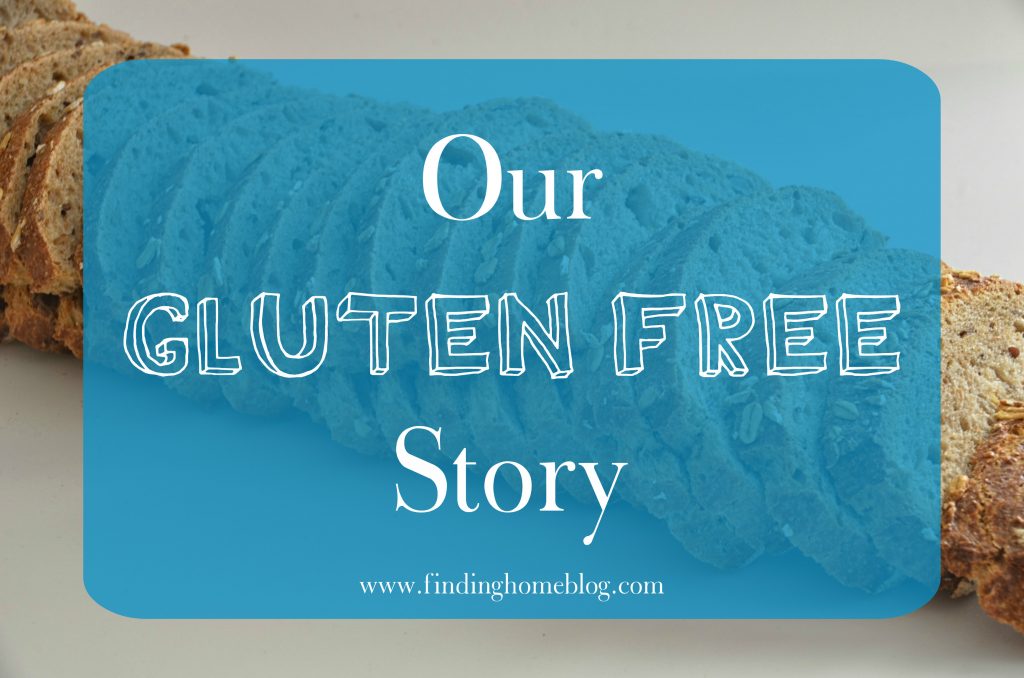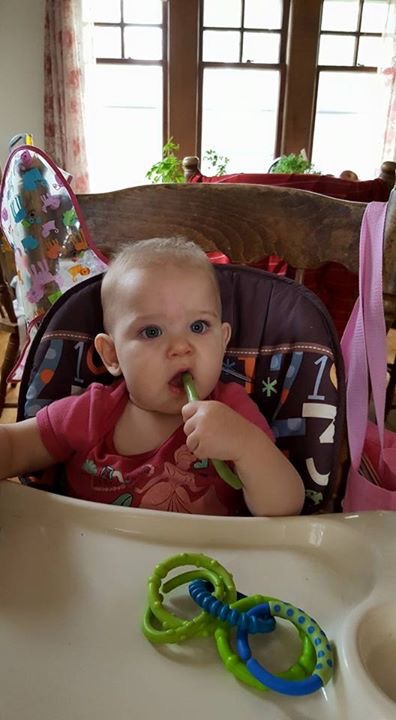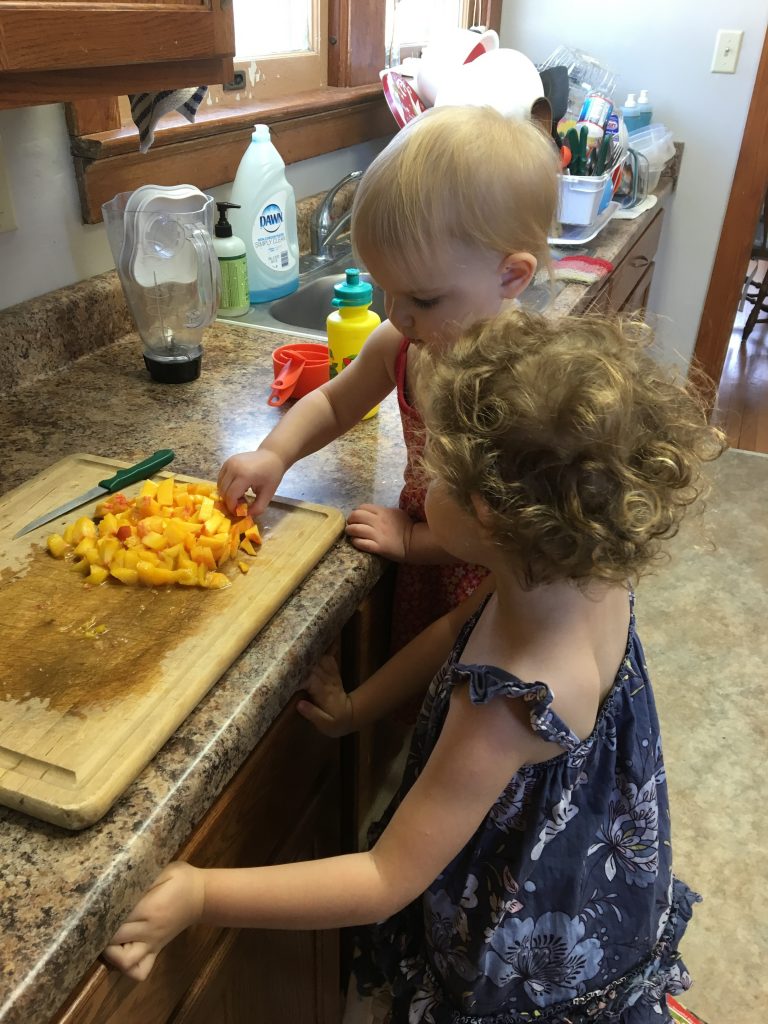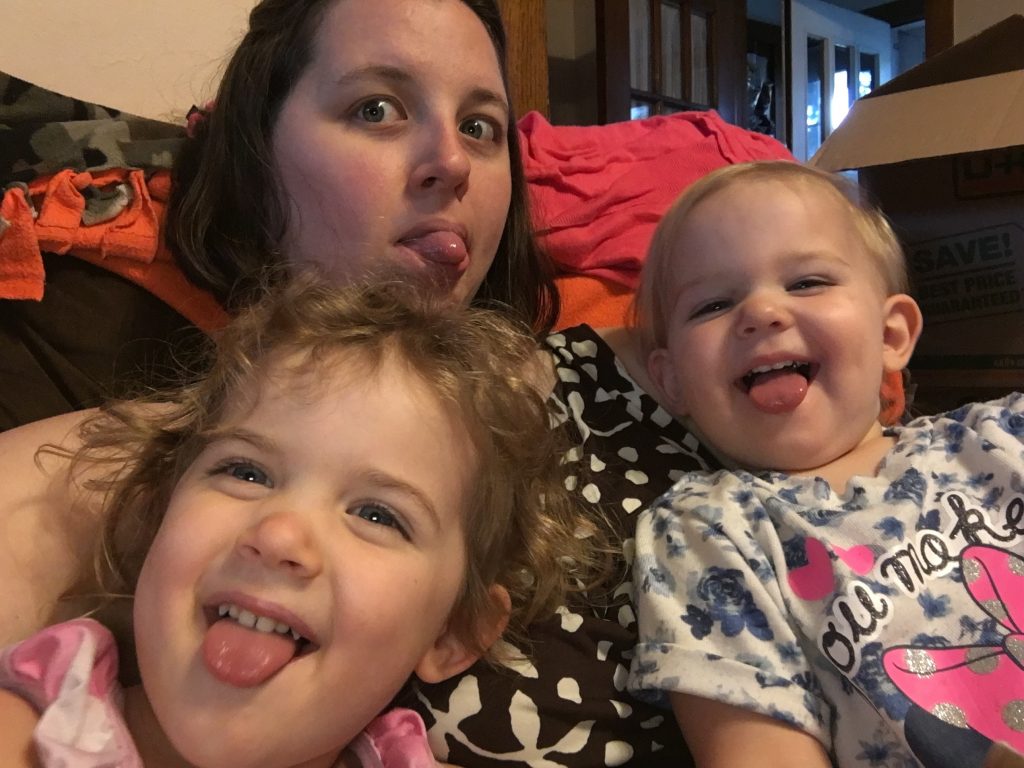When I explain that our two daughters are gluten intolerant, one of the first questions people ask is, “How did you figure that out?” Here’s our gluten free story.

We’ve followed a pretty typical feeding schedule with all of our children once they’re ready to start eating solid foods: start with pureed fruits and veggies, mix in some cereals, and add in bits and pieces of table food as they get better at eating. When Hannah was between 6-9 months old, we started feeding her table foods. As with her older brothers at that age, she was soon eating jarred baby foods mixed with oats, rice, or wheat cereal, as well as snacking off our plates, and eating those little puff snacks that are so handy.
But as she began eating more and more of these foods, she started to get more and more fussy. She had constipation, then really terrible diarrhea. She would arch her back and flail and just generally act uncomfortable. It took about a month of discomfort for me to connect the worst periods with when she had had the most grains.

To figure out what the problem was, we started an elimination diet.
We went from feeding her a mixture of all of the grains to none. She simply ate pureed fruits and veggies, drank her bottles, and that was it. After a few days, she wasn’t fussy as often. After a week, she was like a whole new baby.
Then we started adding things back in. First came oats. She did just fine. Next came rice. Rice was okay too. Then we added back in wheat cereal. Not so good. The discomfort and some of the other symptoms came back.
So we cut out the gluten, and that was that.
I brought it up at her next doctor appointment, but by then she had been off of gluten for almost a month. In order to do allergy testing, she would have to start eating gluten again. Since eating gluten free was working well for us, we opted to just stick with that.

Fast forward another year and a half or so, and Elizabeth was ready to eat table foods. We started the same as with all of the other children, and she started to experience some of the same discomfort as Hannah had. Since we were already eating mostly gluten free, and Hannah was eating completely gluten free, we chose to simply feed her the same way.

So is this celiac? No. The technical term for what our girls have is non-celiac gluten intolerance. This means that while they will not have a life-threatening allergic reaction when they eat something containing gluten, it makes them uncomfortable, and they shouldn’t eat it.
Did you notice these issues when breastfeeding? No. My kids have not been the greatest sleepers when they were babies anyways, and I can’t think as clearly when I’m sleep-deprived, so if there were issues earlier on, I didn’t connect the dots. Because of supply issues, I was no longer breastfeeding by the time the girls were ready for table food. I was also at the point where I had a 3 year old, an 18 month old, and a baby. Things were hard.
Will they grow out of this? Maybe. Every so often they accidentally test things out. Last Christmas, a plate of cookies was out on the table and Hannah helped herself to one. For a Superbowl party, one of them got into the cheese and (not gluten free) cracker tray.
It is interesting to see how things have shifted a bit: Hannah still experiences the constipation and stomach discomfort. Elizabeth, on the other hand, has shifted to where she doesn’t get the tummy troubles as much (although they’re still present), but she goes from a sweet, mostly well-behaved child to an absolute terror.
As they get older and are better able to describe how they’re feeling, we will probably continue to test this every so often. But for now, they’re not quite at the point where they can describe the problem so we don’t test on purpose.
Why do they have these issues, and no one else in your family does? From what I’ve read, gluten intolerance is partially due to genetics. As we’ve eaten less gluten in our family overall, I’ve noticed that I personally have a few issues with it when I have too much. My joints hurt, I get bloated, and I get crabby far more easily. So part of it may be from my side of the family.
While it is a bit of a challenge for the girls when we are eating food prepared by other people, in a way I’m thankful that it’s not just one person dealing with this alone.
What do the doctors say? We have had several pediatricians while figuring these things out. While they have all been friendly and open to what we want to do, we haven’t actually received a lot of guidance from them. I’ve had to research things on my own, and we’ve had to make our own choices for what we think is best. Most have simply said that if what we are doing is working, go ahead and stick with it, because it won’t hurt anything for the kids to eat gluten free. Not exactly a vote of confidence, but I’ll take what I can get.
How do you deal with eating gluten free away from home? When we eat at restaurants, there are usually enough options that we can make a meal for the girls. Sometimes we have to ask about ingredients, and sometimes we have to get creative.
When we attend church functions or parties, I’ll usually bring something along so that I know we have a gluten free option. As they get to know our situation, people are very willing to ask what the girls can eat and make sure there’s something for them, which is such a blessing!
What questions did I miss? What would you like to know about our gluten free journey?

Please note that this is just our family’s story. I am not offering any sort of medical advice here. But if you are struggling with a gluten issue or other food allergies or sensitivities, I would love to be a listening ear or to pray for you. It is a challenge!
Leave a Reply